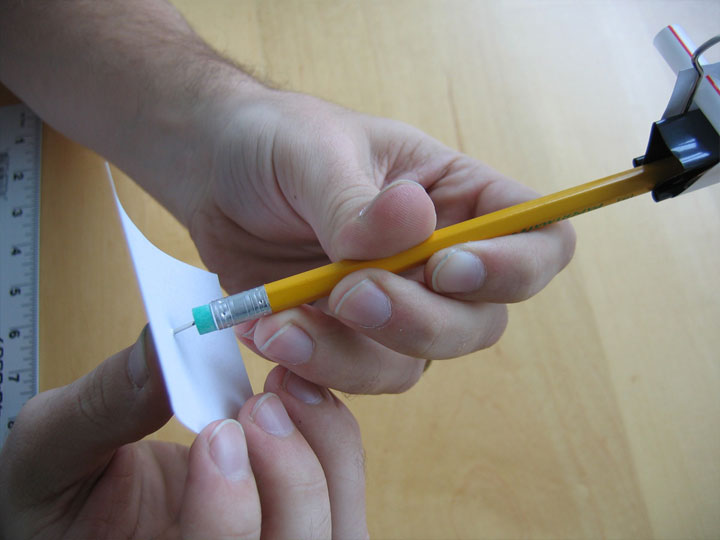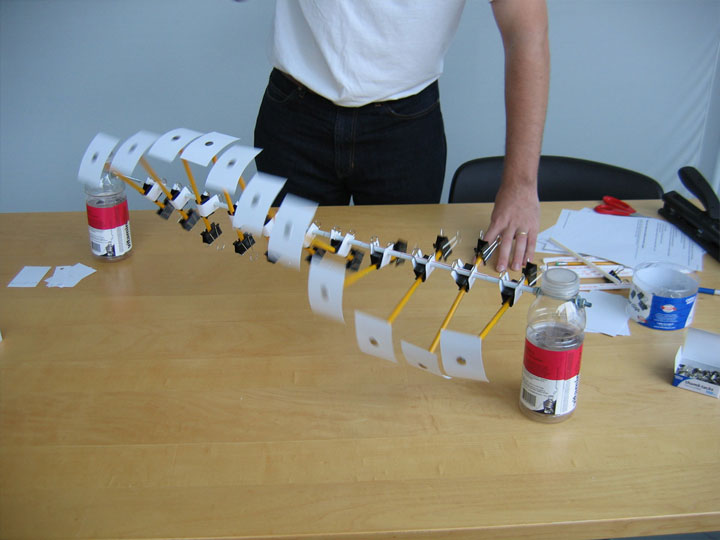$10 kinetic sculpture model
The brief: Create a model of McWane Science Center’s sculpture, Linear Motion, that middle school students can build, with readily available materials for under $10.
The full instructions can be viewed at this site

Project Details
The year before I started working at Push, the company designed and oversaw the installation of a colossal kinetic sculpture at the McWane Center, Birmingham's Science Museum. The sculpture, named Linear Motion, uses counterweights and pendulum motion to display a variety of patterns.
To start students thinking about the scientific concepts behind the sculpture, I created instructions for making a model of Linear Motion, out of easily obtained items, for under $10.
Materials used: unsharpened pencils, binder clips, drinking straws, thumb tacks, index cards, 2 plastic bottles, threaded rod, nuts and washers
One sixth grade science class did use the instructions as part of a special project where each student made their own model of Linear Motion. I was able to attend a parent night when all of the models were on display. It was wonderful to see that although everyone worked off of the same set of instructions, each model was made slightly different showing the care and personality of the makers.
Cam Model
Water-jet cut parts bring to life McWane Center’s sculpture, Linear Motion. Instructors at McWane needed a way to “pause” the sculpture to explain the science behind it. This kit uses cams to mimic the pendulum motion of the original.

Project Details
Materials used: plywood, index cards, tape, plastic conduit, all-thread, nuts and lock washers, and one length of square acrylic tube.
This was also an experiment in water-jet cutting thin plywood, which worked out surprisingly well.


